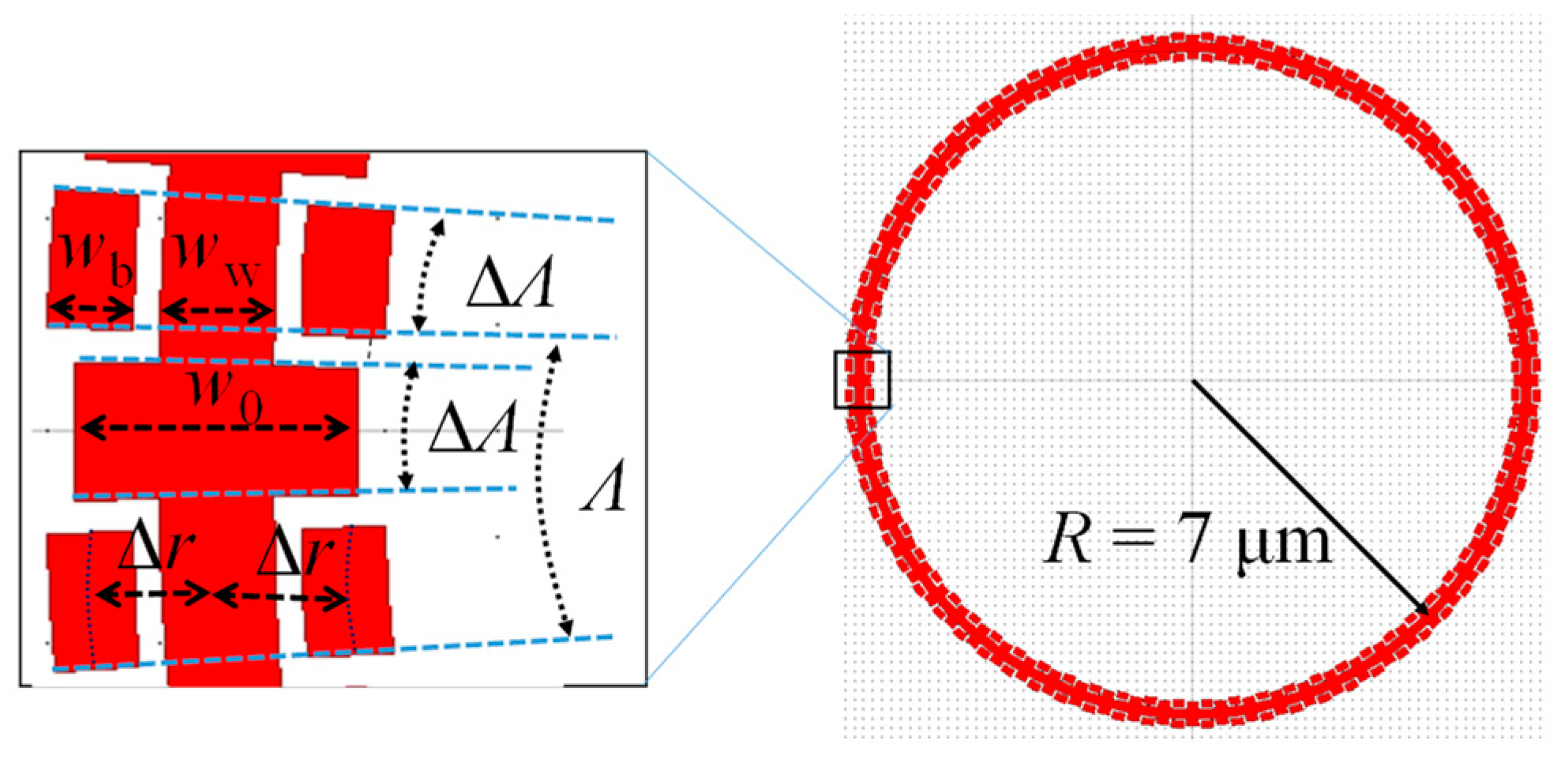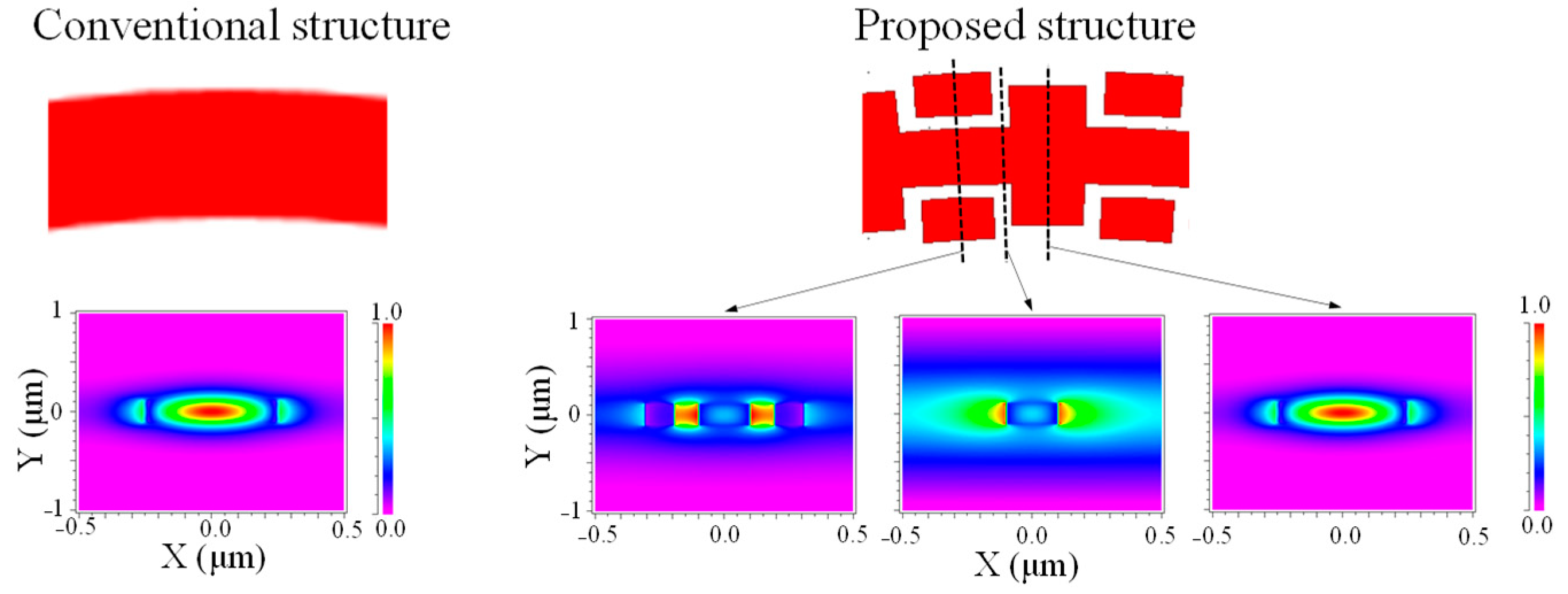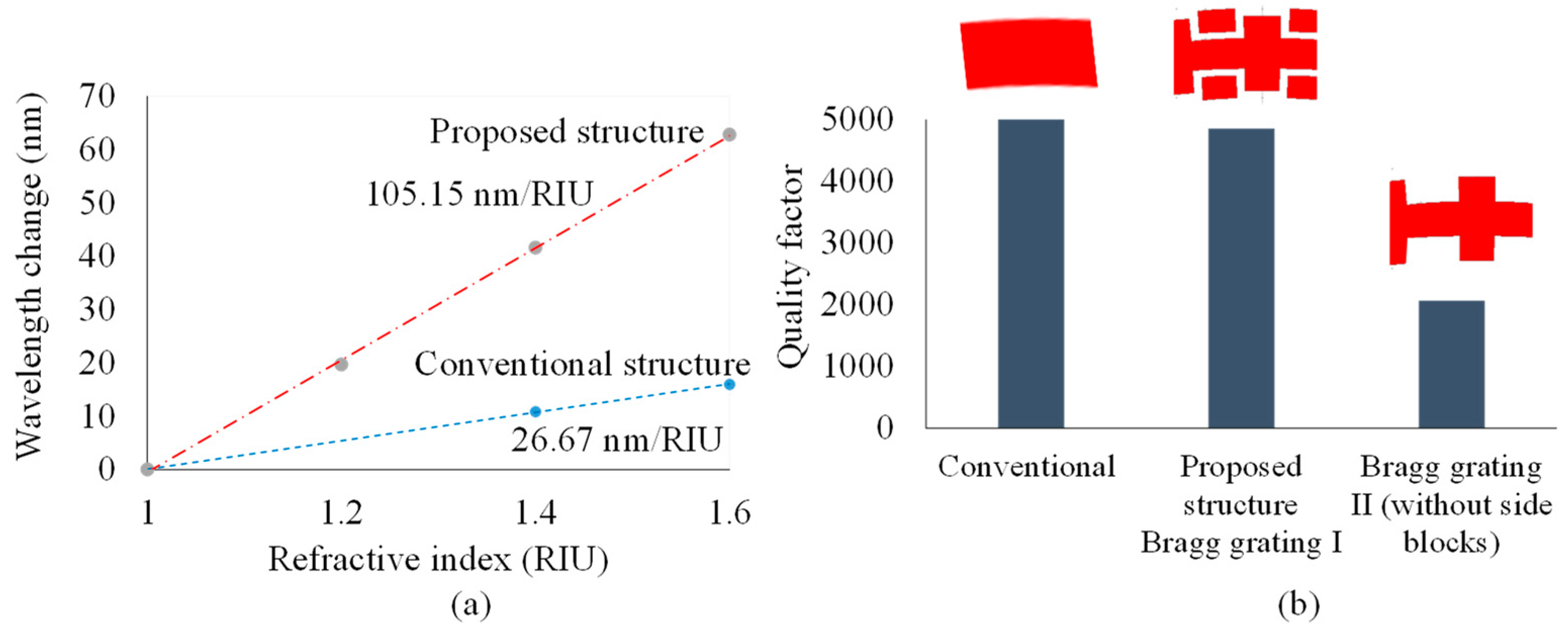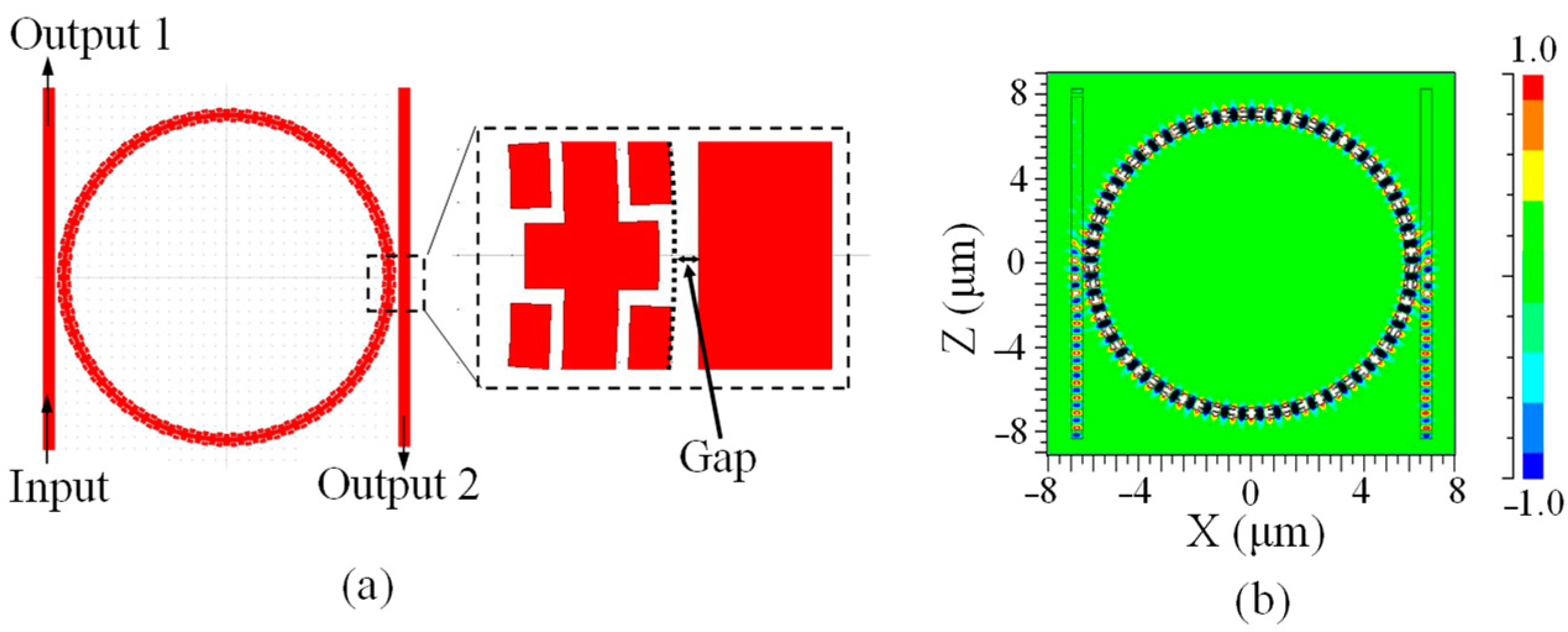Photonic Biosensor for Label-Free Detection Based on Photonic Nanostructures on Si-Waveguide Ring Resonator †
Abstract
:1. Introduction
2. Results
2.1. Characteristics of Micro-Ring Resonator
2.2. Ring Resonator with Bus Waveguide
3. Conclusions
Funding
Conflicts of Interest
References
- Lo, S.M.; Hu, S.; Gaur, G.; Kostoulas, Y.; Weiss, S.M.; Fauchet, P.M. Photonic crystal microring resonator for label-free biosensing. Opt. Express 2017, 25, 7046–7054. [Google Scholar] [CrossRef] [PubMed]
- Laplatine, L.; Al’Mrayat, O.; Luan, E.; Fang, C.; Rezaiezadeh, S.; Ratner, D.M.; Cheung, K.; Dattner, Y.; Chrostowski, L. System-level integration of active silicon photonic biosensors. Proc. SPIE 2017, 10061. [Google Scholar] [CrossRef]
- Yan, H.; Huang, L.; Xu, X.; Chakravarty, S.; Tang, N.; Tian, H.; Chen, R.T. Unique surface sensing property and enhanced sensitivity in microring resonator biosensors based on subwavelength grating waveguides. Opt. Express 2016, 24, 29724–29733. [Google Scholar] [CrossRef] [PubMed]
- Barrios, C.A.; Gylfason, K.B.; Sánchez, B.; Griol, A.; Sohlström, H.; Holgado, M.; Casquel, R. Slot-waveguide biochemical sensor. Opt. Lett. 2007, 32, 3080–3082. [Google Scholar] [CrossRef] [PubMed]




Publisher’s Note: MDPI stays neutral with regard to jurisdictional claims in published maps and institutional affiliations. |
© 2021 by the authors. Licensee MDPI, Basel, Switzerland. This article is an open access article distributed under the terms and conditions of the Creative Commons Attribution (CC BY) license (https://creativecommons.org/licenses/by/4.0/).
Share and Cite
Truong, H.A.; Shang, Y.; Abe, S.; Matsuda, N.; Yamada, H. Photonic Biosensor for Label-Free Detection Based on Photonic Nanostructures on Si-Waveguide Ring Resonator. Eng. Proc. 2021, 6, 39. https://doi.org/10.3390/I3S2021Dresden-10158
Truong HA, Shang Y, Abe S, Matsuda N, Yamada H. Photonic Biosensor for Label-Free Detection Based on Photonic Nanostructures on Si-Waveguide Ring Resonator. Engineering Proceedings. 2021; 6(1):39. https://doi.org/10.3390/I3S2021Dresden-10158
Chicago/Turabian StyleTruong, Hoang Anh, Yugang Shang, Shunsuke Abe, Nobuyuki Matsuda, and Hirohito Yamada. 2021. "Photonic Biosensor for Label-Free Detection Based on Photonic Nanostructures on Si-Waveguide Ring Resonator" Engineering Proceedings 6, no. 1: 39. https://doi.org/10.3390/I3S2021Dresden-10158
APA StyleTruong, H. A., Shang, Y., Abe, S., Matsuda, N., & Yamada, H. (2021). Photonic Biosensor for Label-Free Detection Based on Photonic Nanostructures on Si-Waveguide Ring Resonator. Engineering Proceedings, 6(1), 39. https://doi.org/10.3390/I3S2021Dresden-10158





